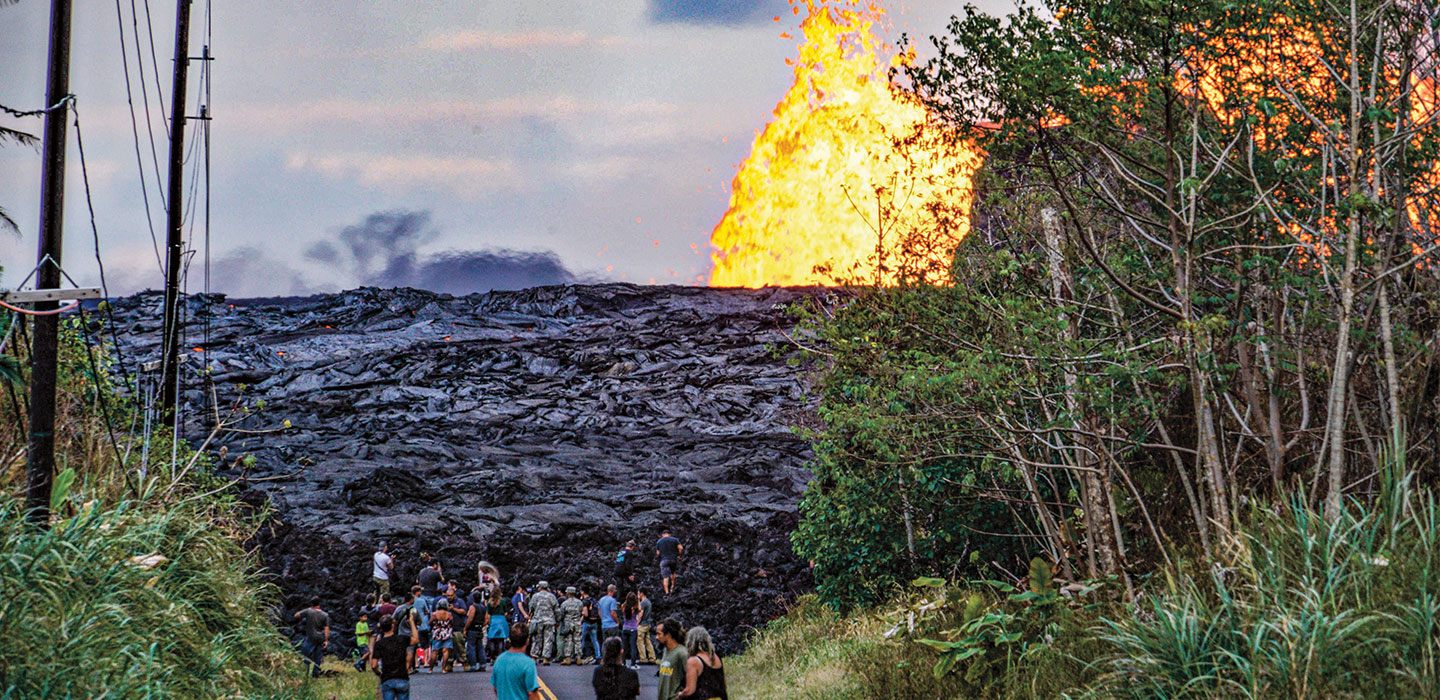PATRICIA JANES
ERUPTION WITNESS: Alex Toa Tiapula Tuson
Last May, a group of students living on the Big Island of Hawaii climbed aboard a school bus for a field trip. Thirteen-year-old Alex Toa Tiapula Tuson was among them. The outing wasn’t all that different from the field trips students nationwide take each year, except for one thing: Alex’s school sits atop Kilauea—an active volcano. As the bus drove along the volcano’s summit, the students heard a rumbling sound. They watched as a plume of ash shot into the air. Students quickly grabbed their cell phones to record the spectacle.
The outburst wasn’t that surprising to Alex. That’s because in the months leading up to his school trip, Kilauea had become more and more active. Locals had begun feeling the impacts in early May when giant fissures opened on the volcano’s eastern slope. Lava poured from the cracks. The molten rock blocked roads and destroyed hundreds of homes and other buildings. Then, large explosions like the one Alex had witnessed began rocking the volcano’s summit, sending up clouds of ash and toxic gas.
As of press time, Kilauea’s increased activity shows no signs of stopping. Thousands of residents have been evacuated from their homes. Others, like Alex’s family, have been told to shelter indoors when the wind carries ash and fumes their way. Scientists have been monitoring the volcano around the clock. Researchers are tracking ash clouds and lava flows to predict their movements so they can help keep everyone in the area safe.
Last May, a group of students climbed onto a school bus on the Big Island of Hawaii. They were headed for a field trip. Thirteen-year-old Alex Toa Tiapula Tuson was among them. Students around the nation take field trips each year, and this trip wasn’t that different, except for one thing. Alex’s school sits on Kilauea, an active volcano. As the bus drove along the volcano’s summit, the students heard a rumble. They watched a cloud of ash shoot into the air. Students quickly grabbed their cell phones to record the sight.
Alex wasn’t that surprised by the outburst. Why not? Kilauea had become more and more active in the months before his school trip. Locals had begun feeling the effects in early May. That’s when giant fissures opened on the volcano’s eastern slope. Lava poured from the cracks. The molten rock blocked roads and destroyed hundreds of homes and other buildings. Then large explosions began, like the one Alex saw. They rocked the volcano’s summit and sent up clouds of ash and toxic gas.
Kilauea’s increased activity shows no signs of stopping as of press time. Thousands of people have left their homes. The wind carries ash and gas toward other homes, like that of Alex’s family. Then they have to stay indoors. Scientists have been watching the volcano around the clock. Researchers are tracking ash clouds and lava flows to predict their movements. That way, they can help keep everyone in the area safe.

